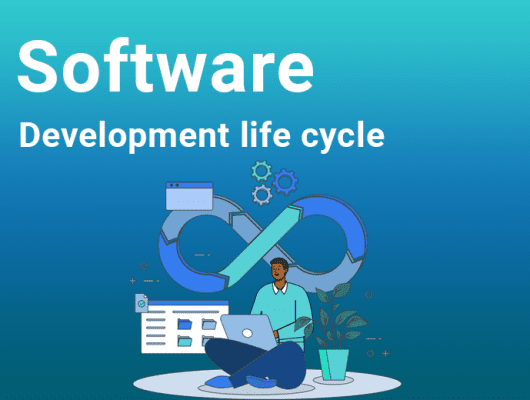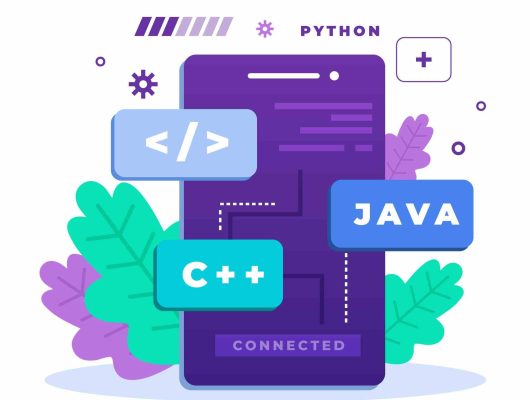
Hidden Costs in Mobile App Development and Ways to Reduce it
Creating your own mobile app is a fun project that lets you show off your ideas to people. However, app owners should pay more attention to the costs that follow an app’s initial launch. These “hidden mobile app development costs” can mount up rapidly, causing delays and overspending.
Therefore, it is crucial to be aware of all potential expenses upfront to manage your app development process effectively. But how do you manage these hidden costs in mobile app development? What are the possible ways to do so? Do you struggle to find the right answer to these questions?
Here is a comprehensive guide that will help you effectively manage the hidden cost of mobile app development.
So, let’s begin.
Table of Contents
1. Understanding the Hidden costs in Mobile App Development

Android holds a 71.52% market share in mobile operating systems, whereas iOS has a 27.83% share. Therefore, assessing the extra expenses associated with developing a mobile app is necessary. Let’s discuss the hidden costs in mobile app development:
1.1. Costs of Function and Third Parties
To enable functionality, third-party or functional costs are service-based integration. It might be necessary for your app to have a feature that demands a subscription. Several connections like this might cost hundreds of dollars. Here are a few examples that cost third-party service:
- Notifications of OTP
- Push Notification
- Email Integration with Social Media
1.2. Expenses for Administration
The administrative services are the ones that give you the most recent information on your end user. Although these expenses are uncertain, they are commensurate with the kind of app development project you are aiming for. One illustration of a compensated administrative service is:
- Tools for managing content
- Emulators for dashboards
- Management of functional services
- Updates that change lively
- Event collectors and analytics
- Controls over access
- Segmenting data
1.3. Costs of Infrastructure
The hidden cost in mobile app development infrastructure include hosting, data storage, and data delivery. Therefore, load balancers are necessary for backup and security servers in addition to redundancy. Thus, this undertaking escalates in cost and complexity. The following are a few examples of infrastructure costs:
- Servers
- Networks for delivering content
- Image information
1.4. Costs of IT Support
All app maintenance involves ongoing technical assistance. With IT support, creating a high-quality app is possible. Over time, the cost of mobile applications development can go up. Here are the few examples of IT support services include the following:
- Submissions of app updates
- Updates for native apps and the hybrid apps
- API Upkeep
- Bug repairing
1.5. Mid-Project Changes
If you decide to change the project’s scope or add new features in the middle of development, you may have to pay more.
At the start of the development process, you might have a different point of view, but with the passage of time, you need your software to do more. These activities may result in work overlap, raising the hourly cost.
So, to avoid this inconvenience it is essential to have a minimal viable product or MVP especially if your scope needs clarity.
1.6. Upkeep of Applications
App maintenance costs follow development and deployment. Updates to the app’s functionality, design, and error/bug fixes are all included.
App bugs are common, leading to code or design problems, crashes, or downtime. These issues severely ruin users’ experiences within an app. Therefore, It takes routine app maintenance to fix or avoid them.
In the first year following app release, Android app maintenance should cover 50% of the cost of production, while iOS app maintenance is cheaper.
After the first year of regular maintenance, this cost will drop by 15% to 20%. For instance, if the price of developing the mobile app is $68,000, the annual maintenance cost should be $10,200. Remember that native applications are more expensive to maintain than hybrid or cross-platform applications.
1.7. App Store Requirements
Submitting your program to the Apple app Store and Google Play Store requires a reasonable fee. The Apple developer program costs 99 USD a year, and creating a Google developer account costs 25 USD.
So, it is essential to update the app apps following the policies and standards of the app stores that regularly change. Remember, these software updates will necessitate hidden costs in mobile app development, so you should budget for them to avoid going overboard.
1.8. Marketing Apps
The introduction of your app should draw a lot of interested users. Following the launch, this awareness generates a respectable user base that provides insightful input for enhancements and upgrades.
Depending on your needs, the launch’s marketing expenses could range from $4000 to $8000. With solid PR and marketing plans, it survives competition on these platforms.
It is difficult to pay anything from $8,000 to $25,000 every six months for app marketing on these sites.
2. Statistical insights: data and figures to take into account.
The average price to create an app, as reported by reputable research companies:
- Primary: Between $15,000 and $30,000.
- Mild complexity: between $30,000 and $70,000
- High intricacy: $250,000 and above
Extra data regarding the typical app development cost:
- Cost on average: $171,450
- Lowest price range: $150,000 to $22,000
- Upper end: between $200,000 and $500,000+
- Apps for e-commerce are typically the priciest: $171,000 in the median
- The development of a mobile application might cost $1 million.
- The development of a new feature takes 32 hours on average.
- More than half of some app budgets go toward bug fixes.
- American app developers bill between $100 and $150.
3. Strategies to reduce Hidden costs in Mobile app development
Nearly every firm considering a mobile launch has wondered, “How can I lower the hidden costs in mobile app development?” Unfortunately, it’s hard to cut the price by 50% right now, but there are ways to make it reasonable. Like
3.1. Keep the UI/UX simple.
Selecting simple and elegant designing is one way to cut costs associated with app development. A straightforward user interface is crucial, especially for novice users, as it facilitates more straightforward adaptation.
Note that, the majority of apps and websites users go for a minimalist, remarkably inexpensive design.
3.2. Take your time with the process.
Developers frequently rush clients to complete projects earlier than planned, but there may be better courses. You can only expedite the development process once you work with a team of experts. It will be prudent to go cautiously and address each stage of the development one at a time.
3.3. Outsourcing
The need to cut costs associated with developing mobile apps is one of the main drivers behind commercial outsourcing. As noted, developing an app in the US or Australia costs $100–120, but in the East it costs $60–80 per hour. However, there are numerous benefits to outsourcing:
- Lower development expenses
- The ability to access a worldwide talent pool and avoid hiring your staff
- Organize resources according to demand
- Time and cost effective
But it is only possible if you contact the team of a skilled professional. Therefore, feel free to contact us to reduce outsourcing risks.
3.5. Frequent troubleshooting
The app needs regular updates and repairs even after it launches. Hiring a specialist can help you reduce mobile app development costs throughout the process.
Make certain that, using low-cost freelance developers may require you to spend a lot of money to rewrite the app if something goes wrong.
3.6. Access features unique to mobile devices.
Every gadget comes with a few built-in features, such as a camera, GPS, and phone options. Although including them inside the app can seem like a smart idea, there are two problems.
First, different devices have different characteristics, so some users might not be able to utilize the app. Second, if these features are not required, they can be added without incurring additional costs. For example, a news app can be skipped since it doesn’t require access to the GPS. Therefore, the best idea is to opt for the necessary features to make your app a user friendly.
3.7. Utilize premade templates
How can the hidden cost in mobile app development be decreased? Select premade templates. While creating something from scratch is excellent, it is not very economical.
There are a ton of templates available online that would work flawlessly with any app. Using these premade templates helps you save a lot of time and money.
Although using ready-made templates can lower overall development costs, custom app development is typically advised based on your business’s needs. Unlike apps produced from premade templates, the latter allows you to scale your app in response to shifting market demands. This scaling constraint raises the likelihood of complete rebuilds in the future, ultimately driving up your Budget.
3.8. Developing Prototypes
Developing a clickable prototype for your mobile application is an excellent strategy to save costs. Your design team may quickly produce a clickable prototype that illustrates the functionality of your app using programs like Adobe XD or Figma. This can help optimize your user experience and determine when to begin development.
3.9. Construct an MVP
Before developing a final product, you can test the market by building an MVP or minimum viable product. MVPs are a condensed, feature-light version of your product that meets the needs of your target market.
3.10. Opting Cross-platform Mobile application
Any entrepreneur hoping to release a mobile app faces the conundrum of whether to target iOS, Android, or both markets. The expense of developing native apps for both platforms is high, and you might lose out on a sizable portion of users on the other platform if you only make an app for that one.
The ideal approach is to create cross-platform applications, which are web apps that function on both platforms. Twitter is one well-known example of a mobile cross-platform app. The most widely used technologies for creating cross-platform applications are Flutter, Unity 3D, and React Native.
Final Reflections
Developing an app is a big decision. Every decision you make will affect the price especially the hidden costs in mobile app development, the time it takes to create and release it, and the success of your product.
But maintaining a well-planned and structured work environment will help you deliver your product on time, reduce unnecessary expenses, and avoid delays. Your best interests are our priority at OnyxTec. Low-budget app development shouldn’t be synonymous with low-quality app development.
Our project management teams guarantee dependency, efficiency, and clarity throughout the development process and after that. This enables us to deliver a top-notch product that our clients adore while keeping your project under Budget.
Have you got an amazing app idea? Let’s set up a brief 30-minute conversation to turn your concept into a product right now!
FAQ
a. How much does it cost to develop an app?
Development costs for a mobile app can range from $8,000 to $150,000, depending on the project’s complexity, platforms used, UI/UX design, quantity and kind of features, developer location, and business objectives.
b. How much time does it take to create a mobile application?
Creating a mobile application may take two, four, six, or even a year. As previously said, the program’s complexity, the developers’ locations, the UI/UX design, and the application’s functionalities are all crucial factors. However, developing an MVP app typically takes two to three months.




